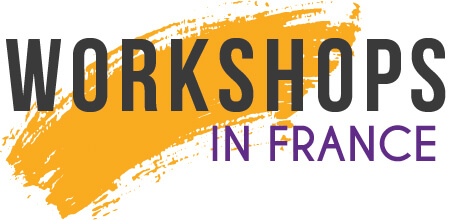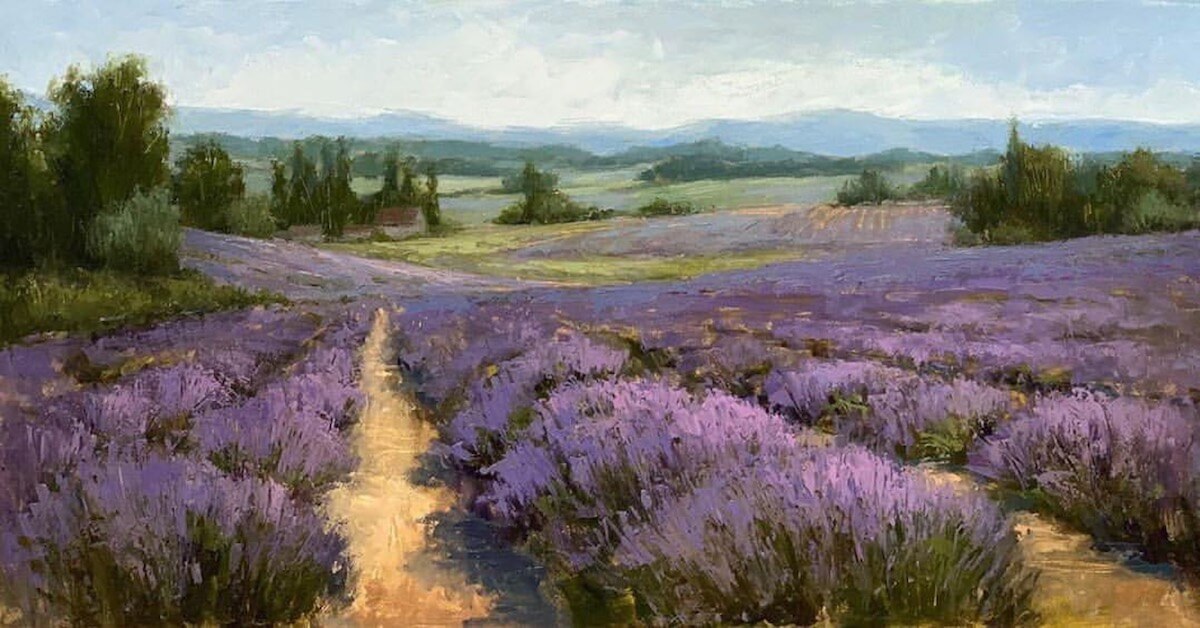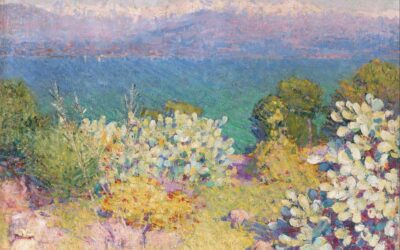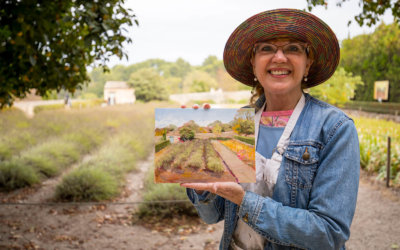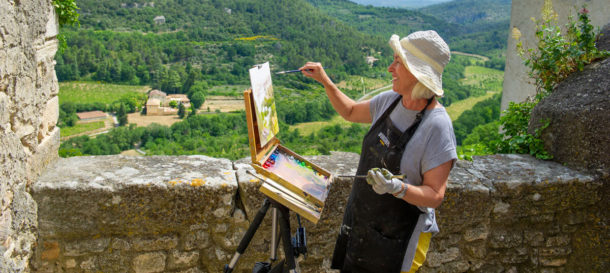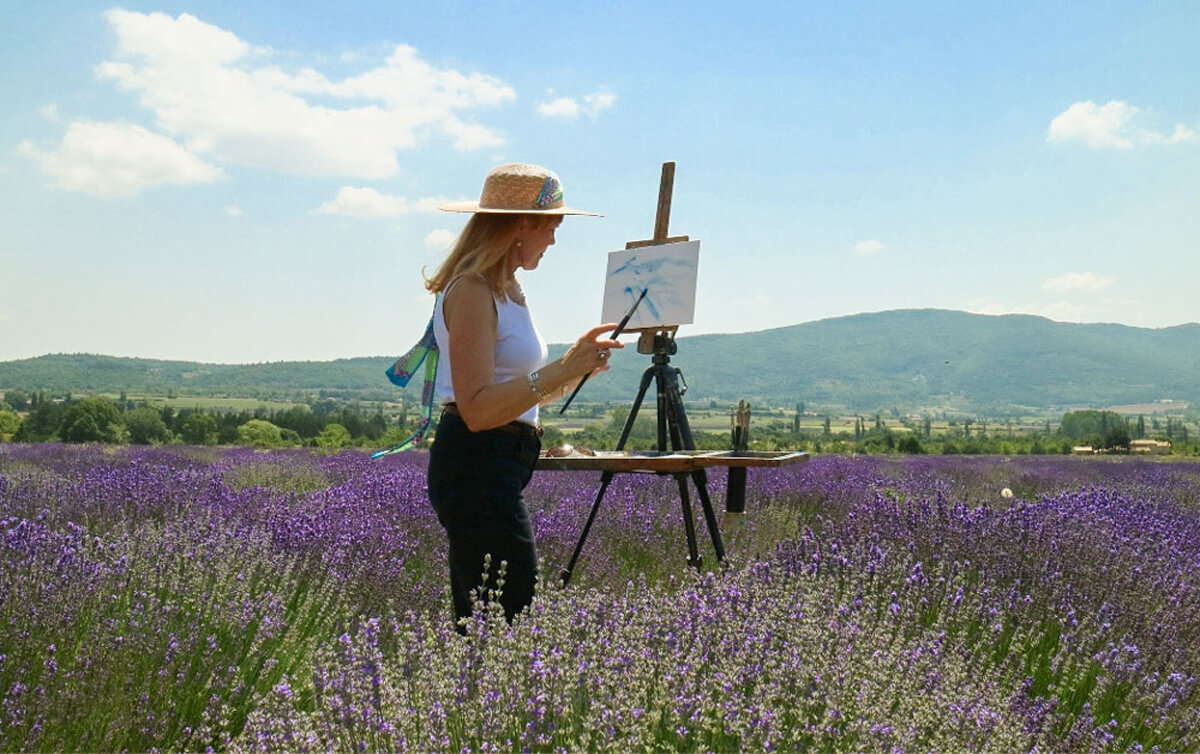
The Wonder of Lavender in Provence
Your first step into a lavender field is a complete sensory invasion.
First there’s the unique color, and then the unforgettable scent. When a breeze crosses the field, it becomes a sea of undulating purple. Then there’s the constant sound of bumblebees making their way from bloom to bloom. They don’t bother us painters; they’re concentrating on their job, ensuring the arrival of next year’s crop.
Lavender fields in Provence are world-famous for their magnificent color and scent. It is for this reason that we hold our Lavender Season art retreat, located within the lavender growing areas of Provence.
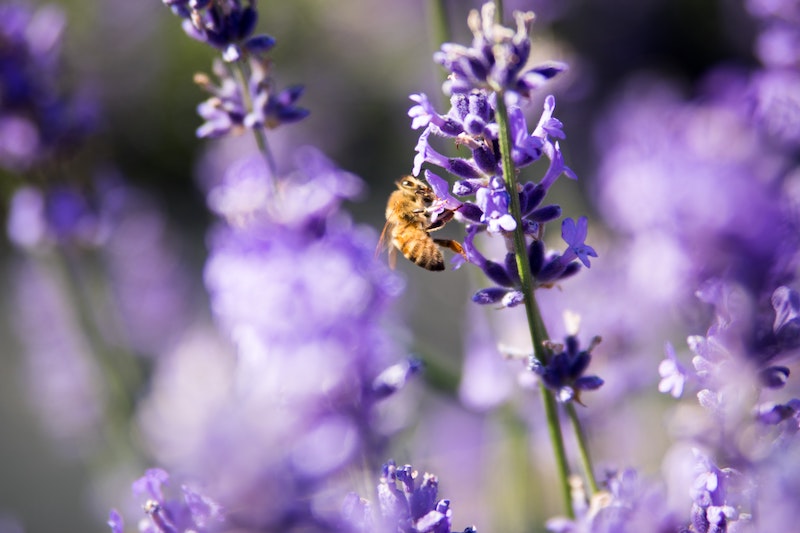
Lavender through Time
Lavender is a truly magnificent crop and for thousands of years has been utilized in many ways beyond simply being admired and painted.
Lavender’s historical impact from its use in medical to personal care is fascinating. It has been farmed and used for over 2500 years. Although the origin of the word “lavender” is obscure, some believe that it was derived from the Latin “lavare,” which means “to wash.” This is no surprise, as fragrant lavender was used by both Romans and Greeks for bathing. It also had a broad range of other uses; in medicine, it was used to treated skin irritations and wash out cuts, and lent its scent to religious ceremonies. In ancient Egypt, lavender oil was used to make perfume and even for mummification.
100 years ago, lavender farming greatly expanded in Provence to support France’s flourishing perfume production. During World War I, lavender oil found widespread use as an antiseptic.
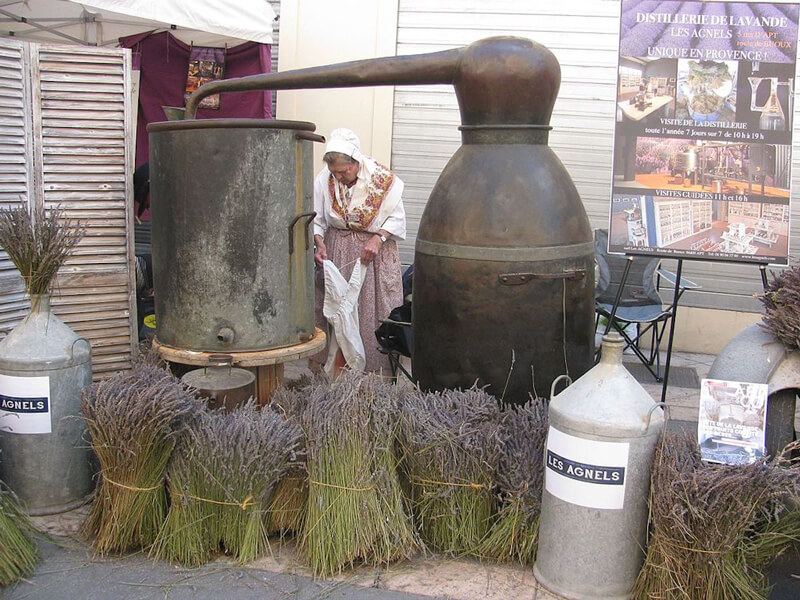
Lavender Today
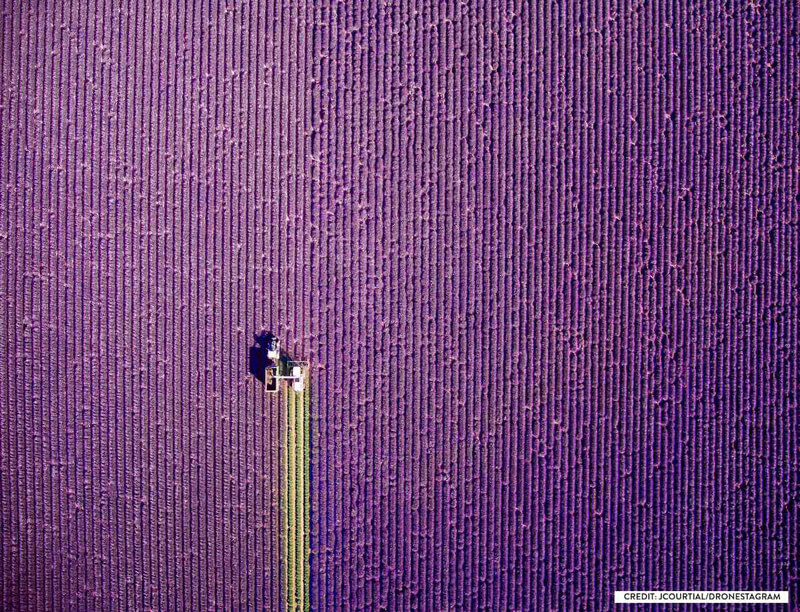
Summer trim, France.
Un champ de Lavandes en Provence
The broadest use of lavender today is in the cosmetics industry. It is found in a wide range of products such as perfumes, shampoo, soap and skincare items.
Beyond beauty, lavender continues to enjoy medical use as an anti-inflammatory and antiseptic. It helps heal insect bites and minor burns and has even been used to treat hair loss and fungal infections.
As in ancient times, lavender is still used today in cooking. It is an herb belonging to the same family as thyme, sage and rosemary. In Provence you can sample Crême Brulée with lavender and lavender ice cream. Ice cream flavored with lavender has a beautiful color, but I can’t say the taste in the confection is appealing…
Although there are almost 50 species of lavender, there are 4 main types that are grown in Provence. Two of the most popular are true lavender, also known as English lavender, and lavandin. Lavandin, a natural hybrid that has been cultivated since the 1930s, has some advantages over true lavender, in that it provides three times the essential oil, but that oil has a much higher concentration of camphor, making the scent more medicinal than pleasant. English lavender on the other hand, has a more delicate and sweet floral scent, and is more highly prized as a prefume..
Lavender Oil
The essential ingredient in most of these uses is lavender oil, and Provence is one of its highest producers in the world.
Lavender oil production has an interesting story. It begins when lavender has bloomed and is ready to harvest, which usually happens in July. At this time, tractors make their way slowly down the rows of lavender in the fields, and the flowers and stems are cut and shot into a large container, often traveling parallel to the harvesting tractor.
The containers are then taken to a distillation facility, often right on the farm, and the lavender remains in the containers throughout the whole process. Steam is circulated through the full containers for approximately 40 minutes. The steam extracts the oil from the lavender and is then collected and cooled, causing the oil to condense and the result is pure lavender oil. It takes almost 450 lbs of fresh lavender to make around 2 pints of essential oil!
Use in Fine Art
Besides being the subject of endless artistic creations, lavender also has a practical use in fine art. Made from a variety called spike lavender or lavandin, spike lavender oil is sometimes used as a substitute for turpentine or mineral spirits, which are commonly used in oil painting to distill paints and to clean materials.
There are numerous health hazards that have long been associated with oil painting, with the use of solvents in painting and cleaning being the main culprits. Solvents aren’t entirely necessary in oil painting, but for many years, artists have used them for oil paint consistency. Spike lavender oil is a healthier alternative to mineral spirits or turpentine and is gaining popularity.

lavender And Then…Update
Due to demand, in February we had added an additional Lavender art retreat to our calendar as there is simply nothing else like the color and beauty of lavender!.
Then came the Covid 19 pandemic.
We decided to consolidate 2 art retreats by pushing them into one 10-day retreat in mid-July. The logic behind this was that we wanted time to see how the pandemic played out and in the interests of safety for our guests we wanted to make it as late as possible, while still being able to experience the lavender. After all, nature has her own schedule. But so did the pandemic. So our next lavender art retreat is in June 2021.
Every workshop retreat is slightly different. During Lavender Season the artists stay at the chateau nestled at the foot of the Luberon Mountains and there we are well placed to visit the legendary lavender fields. Although we are talking about lavender, the retreat covers many more spectacular locations to paint.
Because lavender must be replanted every few years, before each retreat we go scouting to see where it’s growing. Even that doesn’t guarantee that when we go to paint that gorgeous view a week later, the farmer hasn’t beaten us to it and harvested it, so we keep an eye on the fields to make sure we’re not disappointed. Since the lavender fields can be remote, we also take care to find painting spots with shade, nearby refreshments and restroom facilities where possible.
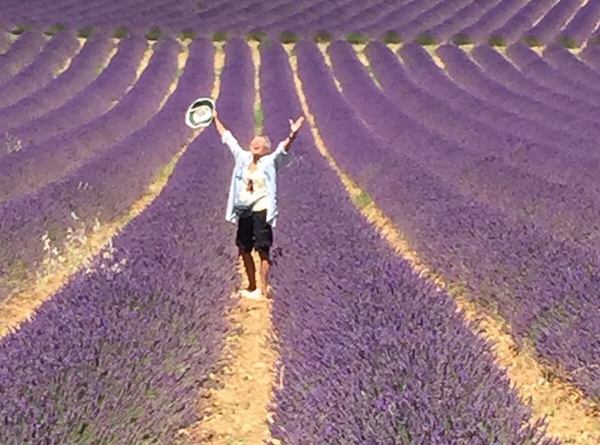
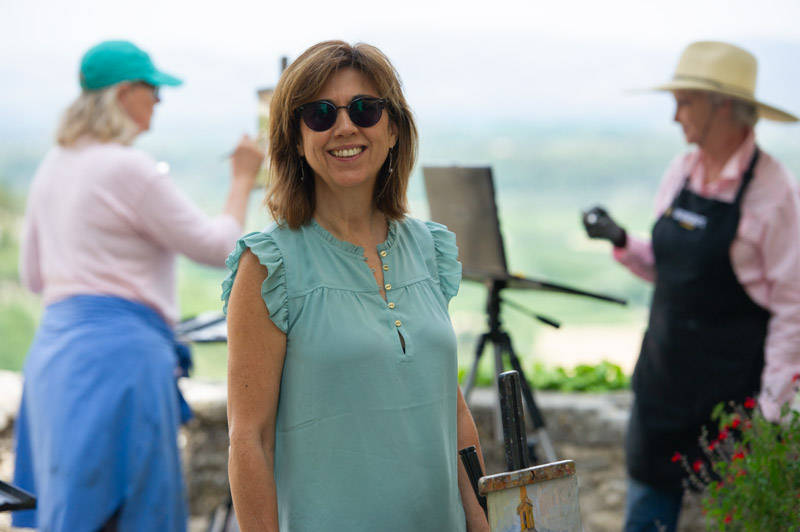
Blogger: Julie Snyder
Julie Snyder is a professional artist and also the programs director of Workshops In France. A native of Scotland, she is a seasoned traveler who splits her time between California and France. You can learn more about her role with Workshops in France here.
Check out more blogs about art workshops, tips and hacks for artists traveling in France and Scotland.
Discovering John Peter Russell: The Lost Impressionist
Why is it that John Peter Russell is known as Australia’s lost Impressionist? Despite being a gifted painter who landed in Paris at the center of the Impressionist movement today he remains virtually unknown. He was well connected with friends like Monet, Van Gogh, Rodin and more
Dreaming of Glorious Provence in Glorious Color
If you asked an artist “What would be your dream painting trip look like?”, their answer would inevitably include a myriad of details that perfectly describe the landscape and colors of Provence. Every season in Provence is an artist’s dream, but September ranks high as one of our favorite times to travel to the South of France.
Hacking Instagram’s Hashtags
There are plenty of reasons to use hashtags on social media.
By the way, when we talk about social media for artists we’re really talking about Instagram. And the one thing that we know about Instagram is that it’s far from being instant, it takes time. So why invest all that time, if you are not getting results?
